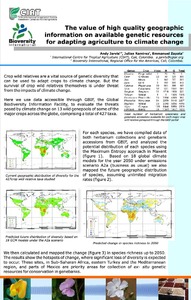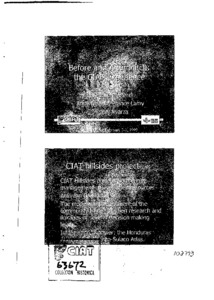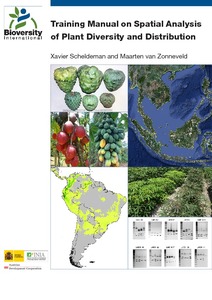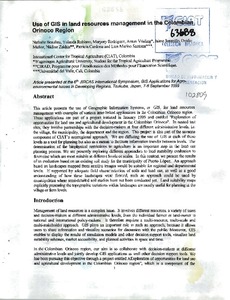Tools for disaster mitigation workshop : Before and after Mitch: The CIAT experience
Towards wellbeing in forest communities: a source book for local government
Governments in many countries are decentralising to give more control over decision making and budgets to local administrations. One expectation of this change is that local governments will more effectively and efficiently respond to the poorest citizens in their jurisdictions. Decentralisation is especially significant to forest communities, which have historically benefited little from government services and poverty reduction programmes because of their physical isolation and social marginalisation.
Training manual on spatial analysis of plant diversity and distribution
This training manual is intended for scientists and students who work with biodiversity data and are interested in developing skills to effectively carry out spatial analysis based on (free) GIS applications with a focus on diversity and ecological analyses.
These analyses offer a better understanding of spatial patterns of plant diversity and distribution, helping to improve conservation efforts. The training manual focuses on plants of interest for improving livelihoods (e.g. crops, trees and crop wild relatives) and/or those which are endangered.
Use of GIS based decision support tools to prioritize areas for animal trypanosomiasis control in Uganda
Use of GIS in land resources management in the Colombian Orinoco Region
Using GIS techniques to aid in predicting a plant virus in beans
Geographical information systems (GIS) assist us in mapping and analyzing outbreaks of diseases in plants, animals and humans. This paper describes how GIS are being used to model the intensity of the outbreak of a plant virus, bean golden mosaic virus (BGMV) in Guatemala, Honduras and El Salvador. BGMV is a geminivirus affecting beans (Phaseolus vulgaris) and is transmitted by a vector, the sweet potato whitefly (Bemisia tabaci). Once a plant is infected by the virus yield losses, at varying locations, can range from 40% to 100%.
Using similarity analyses to scale out research findings across Andean watershed basins
Strategic research in agriculture and natural resources carried out by international research centers is deemed a public good and should, sooner or later, be put into the hands of development, governmental and non-governmental organizations. However, this research is usually done at specific pilot sites; there is a greater need to know how representative those sites are in relation to the diversity of contexts in other locations.
Very high resolution interpolated climate surfaces for global land areas
We developed interpolated climate surfaces for global land areas (excluding Antarctica) at a spatial resolution of 30 arc s (often referred to as 1-km spatial resolution). The climate elements considered were monthly precipitation and mean, minimum, and maximum temperature. Input data were gathered from a variety of sources and, where possible, were restricted to records from the 1950 2000 period. We used the thin-plate smoothing spline algorithm implemented in the ANUSPLIN package for interpolation, using latitude, longitude, and elevation as independent variables.
Water and agriculture vulnerability to climate change and adaptive capacity in southern Africa.
Increasing temperatures and declining rainfall patterns as well as increasing frequency of extreme climate events such as droughts and floods are the expected future weather patterns within the tropics. Africa, particularly Southern Africa, is projected to be the region most vulnerable to the impacts of climate variability and change especially in agriculture and water. This has dire consequences as most people in Southern Africa depend on agriculture for their livelihoods.
Towards Kenya’s Profile of the Land Administration Domain Model (LADM)
The application of computer technology in land administration is touted as one way of ensuring efficient and transparent land administration. Although this true, one major concern is not only how to create a computerized land information system that is interoperable across different government departments responsible for different land administration functions, but also how to ensure interoperability between national and devolved levels of government departments responsible for land administration.






